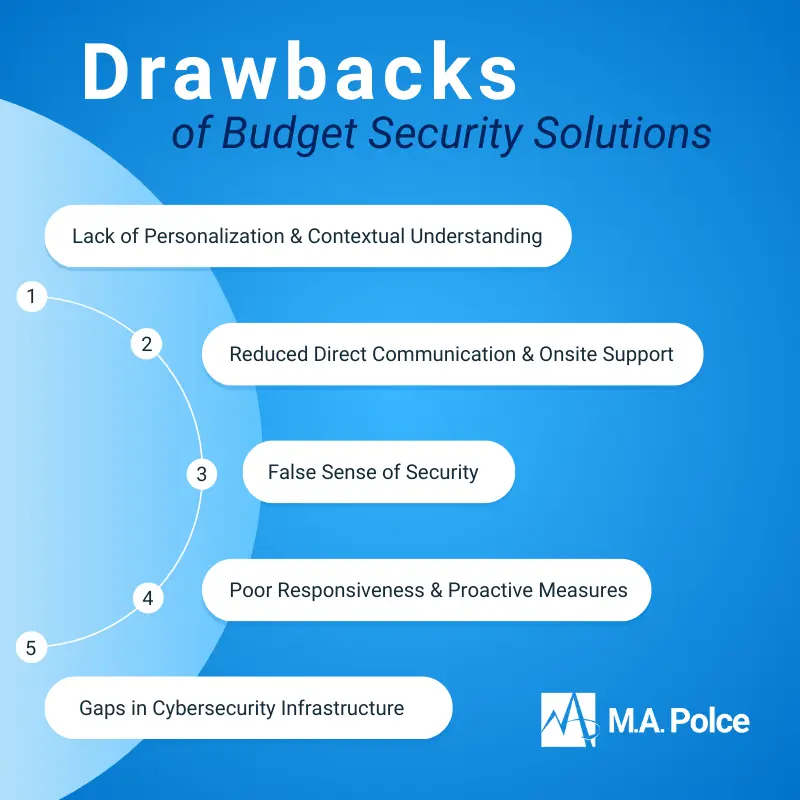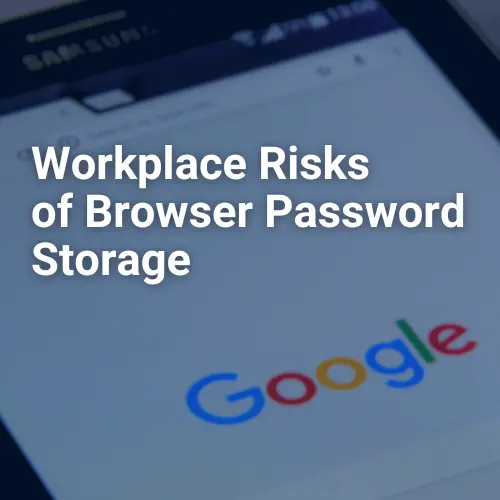How well is your school district protected against cyberattacks? While cybersecurity is a primary concern for all organizations, K-12 schools can be especially vulnerable. Research indicates a 92% increase in cyberattacks targeting K-12 schools in 2023. As more schools implement digital technologies for innovative learning, cybersecurity threats are poised to grow more in the coming years.
Yet, school districts face another challenge – the budget. They must allocate resources to academic programs, athletics, extracurriculars, and more, leaving money tight for IT. As such, many schools look for the most affordable cybersecurity tools to respond to threats. However, effective cybersecurity is about more than tools. It’s about people. Working with large vendors might mean lower costs but ignores the lack of personalized service provided by managed service providers that may ultimately be more cost-efficient.
Discover how the current cybersecurity landscape impacts K-12 schools, and find a solution through M.A. Polce’s partner-augmented managed detection and response (MDR) service.
Cybersecurity Challenges for K-12 Schools
Numerous recent incidents indicate how susceptible K-12 educational institutions are to cyberattacks. In 2022, Albuquerque Public Schools had to cancel classes for 75,000+ students due to a cyberattack. Rochester Public Schools in Minnesota faced a similar situation when a cyberattack caused class cancellations for 42 schools in 2023. In one of the most devastating examples, a cyberattack targeting the Los Angeles Unified School District led to 2,000 former students’ private information being leaked online.
These examples beg the question: Why are K-12 schools especially vulnerable to cyberattacks? The answer boils down to several major problems.
Insufficient Funding
It is no surprise that one of the most significant hurdles for K-12 schools is insufficient funding. According to the 2023 CIS MS-ISAC K-12 Cybersecurity report, 81% of districts cite insufficient funding as their top concern. Many school districts operate on tight budgets that prioritize essential educational needs over cybersecurity. In turn, this lack of funding can lead to inadequate cybersecurity infrastructure, outdated software and hardware, and insufficient staff training. Without adequate financial resources, schools cannot invest in the necessary tools and technologies to protect against evolving cyber threats.
Moreover, financial constraints can force schools to adopt a reactive rather than proactive approach to cybersecurity. Instead of investing in preventative measures, schools may only address cybersecurity issues after an attack has occurred, leading to higher costs and greater damage in the long run. Due to these financial constraints, cybercriminals often perceive K-12 schools as easy targets. Cybercriminals are likely to target schools more frequently, knowing that they may have weaker defenses compared to other sectors. The perception of easy access to valuable data, such as personal information of students and staff, makes schools attractive targets.
Lack of Cybersecurity Best Practices
CompTIA’s State of Cybersecurity 2024 report addresses the top cybersecurity concerns of organizations across different geographic regions. Two of the most significant concerns include a growing number of cybercriminals (45%) and the variety of attacks (37%). In a cyberattack against a public school district in Baltimore, Maryland, all it took for a cybercriminal to gain access to sensitive information was a phishing email.
Limited resources and the rapidly evolving IT landscape can make it difficult to stay ahead of emerging threats. Schools may not always be aware of the latest tactics used by cybercriminals, or they may struggle to implement and maintain effective cybersecurity measures due to constraints on time and funding.
Bound by resource restraints, school districts often struggle to develop a strong cybersecurity foundation of best practices. While they may recognize the need for a strategic roadmap, regular monitoring, and continuous improvement of cybersecurity posture, these can be daunting tasks when resources are stretched thin.
The challenges are substantial, and the stakes are high, with the safety and security of student and staff data on the line. Recognizing and addressing these challenges is crucial for building a stronger, more resilient cybersecurity posture in K-12 schools.
Outdated Technology
One thing you can count on cybercriminals for is “innovation.” Unfortunately for your school, this means the tools you have in place to protect against cyberattacks might already be ineffective against new threat tactics. Increasingly, cybercriminals aren’t targeting victims with traditional attacks like malware but exploiting cybersecurity tools. This outdated technology often allows threat actors to sneak into networks without detection.
In addition to taking advantage of trusted IT tools, other tactics cybercriminals might employ when targeting your school include:
- Social engineering (phishing/spear-phishing)
- Ransomware
- Accessing stolen login credentials via the dark web
- Accessing networks and systems due to user errors (weak passwords, mismanagement of sensitive data, misconfigured security settings)
The Cost of Cheap K-12 MDR Solutions
K-12 IT teams rarely have the luxury of dedicated in-house cybersecurity experts who can monitor and respond to threats around the clock. Therefore, solutions like managed detection and response (MDR) have become an attractive option to address in-house limitations. Many schools turn to large third-party corporate vendors for MDR services, drawn in by the promise of low prices—especially appealing given the budget constraints that school districts often face.
While these vendors might offer seemingly unbeatable prices, there are significant hidden costs and drawbacks associated with their services.
Lack of Personalization and Contextual Understanding
Large corporate vendors often operate on a one-size-fits-all model. They might not take the time to understand the unique needs and challenges of each school’s environment. Without this contextual knowledge, the solutions they provide can be generic and less effective. Personalized cybersecurity guidance, tailored to the specific infrastructure and threat landscape of the school, is often lacking. This gap can leave critical vulnerabilities unaddressed, increasing the risk of successful cyberattacks.
Reduced Direct Communication and Onsite Support
With a large vendor, schools may find it difficult to establish direct lines of communication. The relationship can feel impersonal, with interactions limited to ticketing systems or generic customer service lines. Onsite support is typically rare or non-existent. This lack of direct communication and support can lead to slower response times and less effective incident resolution. In contrast, regional vendors are more likely to provide timely and personalized support, ensuring that issues are addressed quickly and efficiently.
Poor Responsiveness and Proactive Measures
Large corporate vendors might not be as responsive as needed during critical moments. Their extensive client base can lead to delays in response times, which is particularly detrimental during a cybersecurity incident when every second counts. Dedicated vendors with a more manageable client base are often more responsive and proactive in their approach. They can offer faster detection and mitigation of threats, minimizing potential damage.
Gaps in Cybersecurity Infrastructure
The lack of a strong partnership between the school and the large vendor can result in unnoticed gaps in the cybersecurity infrastructure. These gaps can arise from a lack of familiarity with the school’s environment a poor understanding of the school’s specific needs. Successful cyberattacks become more likely when these vulnerabilities are left unaddressed. A collaborative partnership with a regional vendor often involves regular collaboration, updates, and strategic planning, which helps to ensure a robust and continuously improving cybersecurity posture.
False Sense of Security
The low cost of services from large corporate vendors can create a false sense of security. Schools might believe they are well-protected simply because they have outsourced their cybersecurity needs. However, without the assurance of personalized, partnership-focused services, this perceived security can be misleading. True cybersecurity requires ongoing vigilance, customization, and a deep understanding of the specific environment—elements that are more likely to be delivered by dedicated vendors who engage in strategic partnerships.
Why K-12 Schools Need MDR
The challenges school districts face in securing their networks and systems are complex. As such, the cybersecurity solutions they need must be personalized to their IT infrastructure and respond to their unique considerations. What these institutions need is not simply just cybersecurity tools like antivirus (AV) or endpoint detection and response (EDR), which cybercriminals might already be devising tactics to exploit. Instead, they need a more proactive and partnership-oriented way to defend against advanced threats with managed detection and response (MDR).
Most cybersecurity tools are standalone services that generally require internal IT staff to manage, configure, and respond to alerts. In contrast, MDR is a service provided by third-party vendors that combines advanced technology with human expertise. More specifically, it’s a human-centric service provided by cybersecurity experts backed by a security operations center (SOC). With MDR, human IT specialists use their expertise and various cybersecurity technologies to proactively monitor systems, identify potential threats (known and unknown), and respond quickly.
MDR also lightens the load of incident response off the shoulders of internal K-12 IT teams. Given that resource limitations hold back many schools, MDR can free up time for your teams to focus on other tasks while enhancing cybersecurity measures. Plus, schools must keep on top of compliance requirements like Ed-Law 2-d part 121 and NIST CSF, as well as developments like NYSED data security reviews, to avoid legal trouble. IT experts through a SOC will stay on top of this information for you, alerting you to new requirements and adjusting measures so you remain compliant.
Trust M.A. Polce’s MDR for K-12 Education
When it comes to cybersecurity, tools are only as effective as the people who manage them. For valid reasons, school districts might be tempted to settle for a cheap cybersecurity solution, but this could mean more costs in the long run. That’s why school districts in New York State in need of cybersecurity services should rely on M.A. Polce.
M.A. Polce is an approved Managed Detection and Response vendor for New York State’s 12 Regional Information Centers (RICs) on the statewide contract. Being an approved MDR vendor demonstrates that M.A. Polce has met stringent criteria and has been vetted by New York State. As a result, districts throughout the state can reap the benefit of having a readily available, credible, and trustworthy MDR service provider.
In our approach to MDR, we not only provide and help school districts manage the tool, but also support K-12 IT teams with a close partnership that supports them 24x7x365, offering strategic collaboration and a personalized experience. M.A. Polce stands out because we exclusively focus on New York State and understand the cybersecurity environment and requirements affecting your school. What’s more, our MDR uses proprietary technology that identifies suspicious behavior as the attack occurs. This allows us to halt attacks as they happen, minimizing damage.
Partnering with M.A. Polce also means access to other cybersecurity services and valuable insights that contribute to a cohesive cybersecurity strategy. School superintendents, business officials, data protection officers, and IT directors gain peace of mind knowing support is available from a SOC 2 Type II-certified IT service provider who understands their schools’ unique needs and concerns.
Contact us today to learn more about our IT and cybersecurity services for K-12 education.
Sources:
https://www.clever.com/wp-content/uploads/2024/01/Clever-Cybersecure-2024.pdf
https://therecord.media/minnesota-school-district-cancels-classes-cyberattac-rochester
https://www.nysed.gov/sites/default/files/programs/data-privacy-security/part-121.pdf




